By Emily Glory Peters
The story of Scripps might be described as a story of generosity. Not only did Ellen Browning Scripps found the College at a time when there were few influential female philanthropists, but some of its most beloved spaces exist because of donors who followed her example. Their visible dedication to Scripps’ mission continues to impact—and delight—those on campus today.
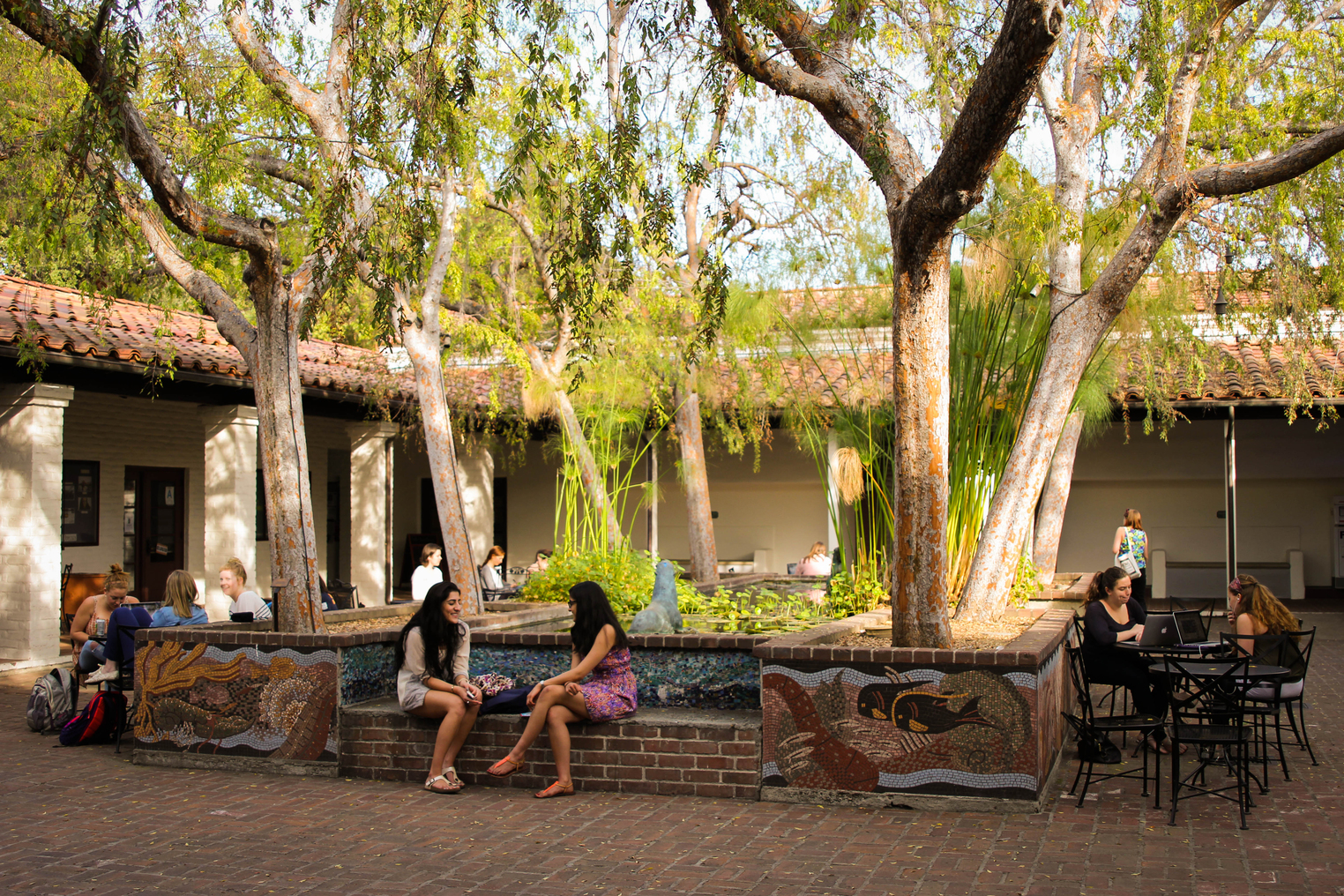
Seal Pond
Seal Court is the polestar of student life at Scripps, and Seal Pond its visual centerpiece. Constructed in 1938, the pond is inlaid on all sides with spectacular mosaic murals designed by past Scripps students.
The mosaics were just one artistic feature brought to life through Scripps’ Fine Arts Foundation. Founded in 1935, today FAF members—which have included Scripps’ first president Ernest Jaqua—operate independently as some of the College’s longest-standing supporters of the arts. From endowed professorships to scholarships to art exhibitions, their philanthropy has advanced the study and creation of art across campus, including the Seal Pond mosaics which daily serve as a celebration of our students’ creativity.
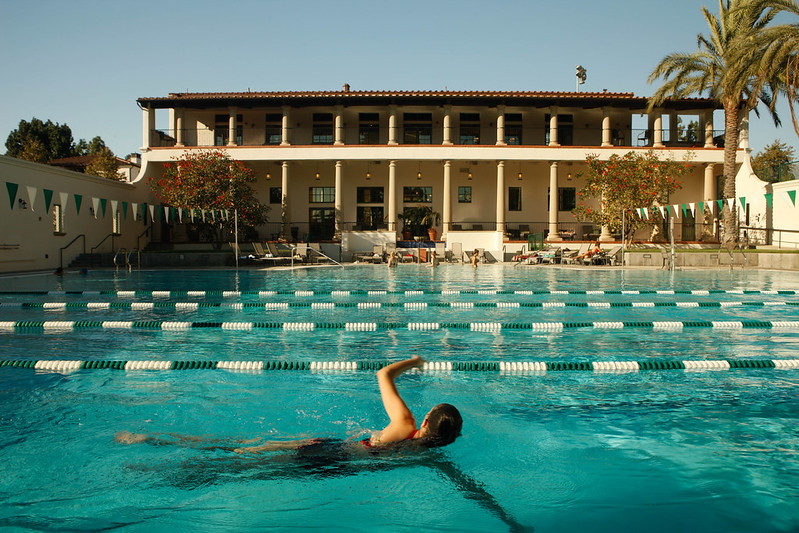
The Sallie Tiernan Field House
Named for one of the College’s most exemplary alumnae and supporters, the Sallie Tiernan Field House serves as a state-of-the-art fitness facility for Scripps and the broader 5C community. The field house was completed in 2008 due to a generous gift from Sallie Tiernan ’45, an accomplished attorney and the first woman chair of the Scripps Board of Trustees. Committed to the advancement of women’s education, Sallie viewed Scripps as a place its students “learned to be individuals.”
Taking full advantage of ample natural light, the field house’s beautiful atrium, broad windows, and stretching porches offer its visitors a chance to enjoy the beauty of Scripps’ Southern California vistas during their workouts. Plus, Sallie’s own passion for swimming is aptly reflected in the field house’s sparkling pool, which plays host to everything from student movie nights to alumnae sunbathers when Camp Scripps is in session.
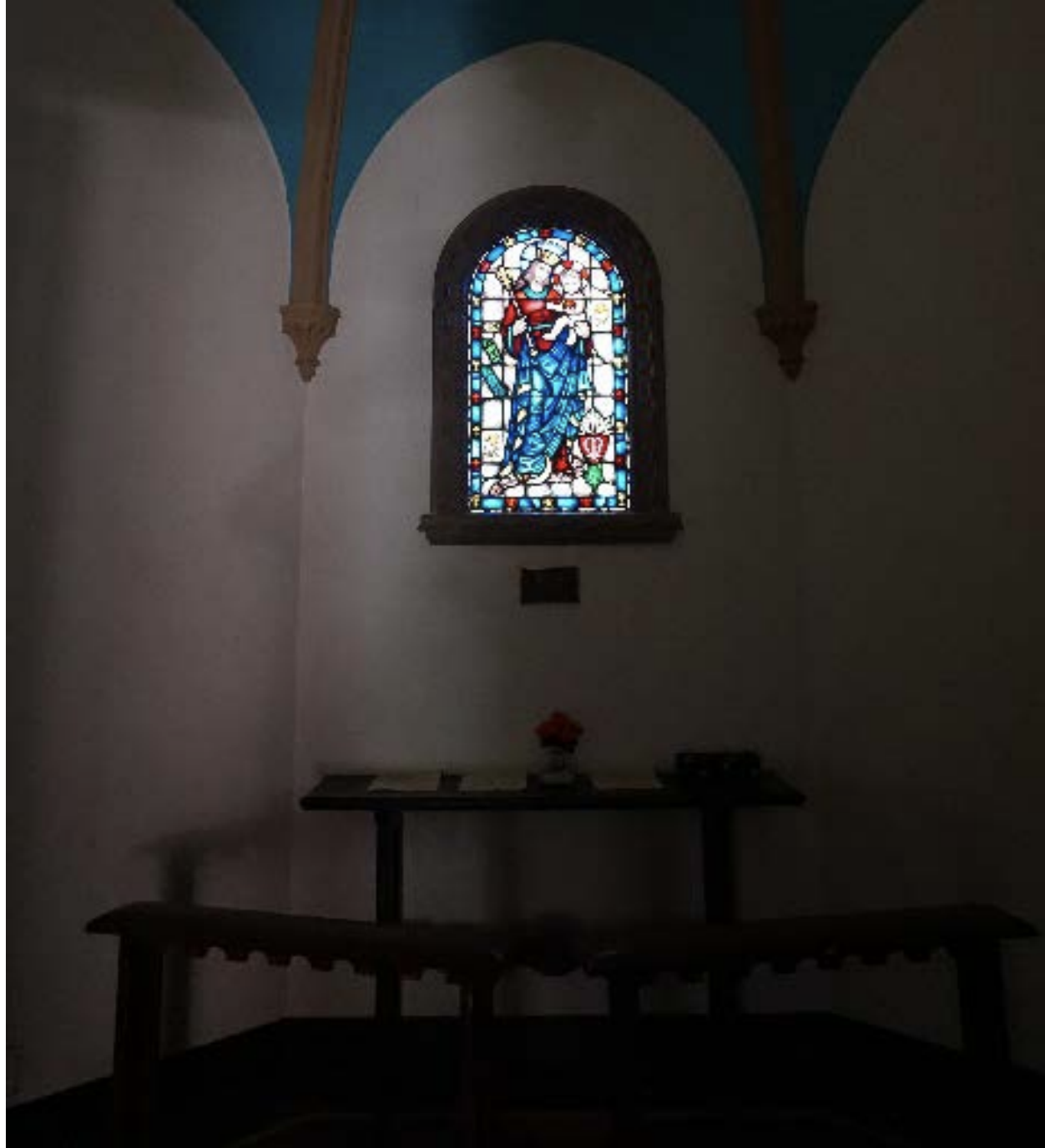
The Margaret Fowler Garden Oratory
This secret-within-a-secret is located in the Margaret Fowler Garden, one of Scripps’ most beloved spots. Designed to resemble the cloistered gardens of medieval Europe, the garden has a hidden oratory—a small prayer room—tucked in its northeast corner, giving visitors a place for quiet contemplation away from the bustle of campus.
Like Scripps’ founder, the little chapel’s eponymic Margaret Brewer Fowler was a teacher, philanthropist, and ardent supporter of education. She served as a member of Scripps’ Board of Trustees as well as the first chair of the Building and Grounds committee, making her a fitting “patron saint” of sorts for the oratory. After her passing in 1931, Scripps donors dedicated the garden and its oratory to Margaret, who was once described by the Upland Community Foundation as a woman of strong individuality and beautiful artistic tastes whose thoughts “were always for the good of others, and never for herself.”
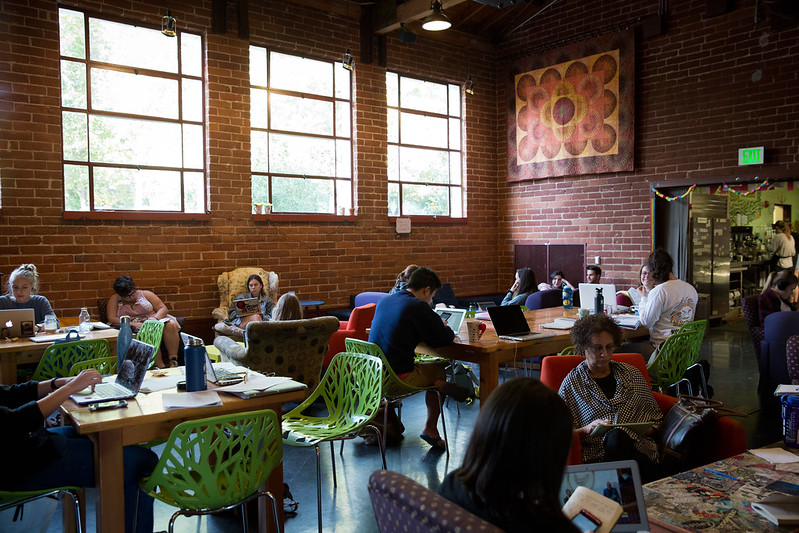
The Motley Coffeehouse
Keeping Scripps caffeinated since 1975, Scripps’ historic feminist coffeehouse is undeniably “the place where it happens,” drawing students, staff, and faculty together for jolts of energy and enlightened conversation. Over the course of its history, the Motley has served its signature brews in different locations across campus, from Balch Hall to even a Scripps basement. Yet, without donor support, the student-run Motley may never have found the permanent home that it enjoys today.
Elizabeth “Ibby” Hubert Malott ’53, another Scripps Trustee and Buildings and Grounds committee member, was a tireless volunteer who devoted her time and treasure both to Scripps and to causes far beyond the College. One of her passion projects at Scripps involved the creation of a central gathering place where the College community could connect and celebrate together. In 2000, the Malott family foundation’s generous lead gift not only gave the Motley Coffeehouse its fixed location, but it laid the groundwork for the whole of Malott Commons. Today, the Commons also houses Seal Court’s many student resources, lecture halls and lounges, and one of the most popular dining halls at The Claremont Colleges.
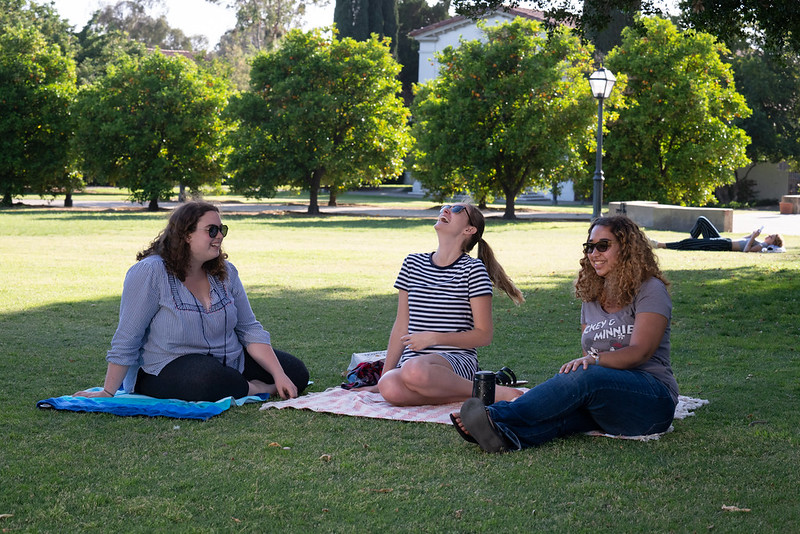
Jaqua Quadrangle Lawn
It’s hard to picture Scripps without its ever-present scattering of students lounging on its central lawn, but there was a time when no such grassy gathering place existed.
Championed in 1934 by two sophomores, Cynthia Criley Williams and Helen Ely Brill, the Class of 1936 began a passionate “Grass Before We Graduate” campaign to seed the quad, famously convincing their entire class to give up two desserts per week to help Scripps budget the necessary funds. The students succeeded in raising $1,500, with the balance provided by Mrs. William Honnold, a longtime friend of the College and family namesake of both Honnold Gate and Honnold Library.
Though the grass didn’t make it in time for the 1936 Commencement, Helen’s father donated a 20-pound bag of wildflower seed to be sprinkled in the interim—ultimately growing into a vibrant backdrop for the triumphant class’s graduation ceremony.
From the victory of Cynthia and Helen’s campaign to the support of devoted Trustees through the ages, Scripps’ landscape is evidence of what gumption and giving can accomplish for others. And as much as the College’s history is one marked by generosity, it’s likewise one of gratitude for all those who choose to invest in making Scripps such a special place.
The Scripps Fund fuels essential campus enhancements and preservation to keep the College grounds at their best for all those on campus. To make a gift in support of these efforts, please click here.

